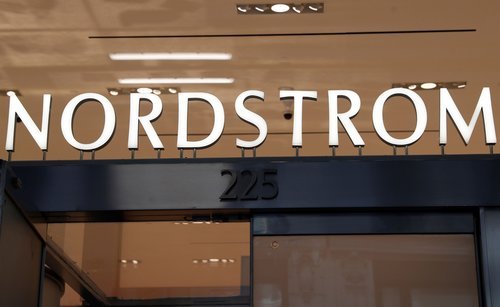Brick and mortar stores are hurting many retailers, but Nordstrom is pushing them as key to the company’s future

The growth of e-commerce has gutted many traditional retailers and led to the shuttering of brick-and-mortar stores. In response, many retail companies have shifted their focus away from physical stores and tried to rapidly grow their digital presence.
But not Nordstrom. The company is doubling down on the importance of storefronts to its future.
The retailer’s stock surged as much as 10% after hours Thursday, after it posted better-than-expected earnings and shared updates about the future of its brick and mortar footprint.
The company posted earnings of $0.81 per share for the three months ending November 2, double the earnings per share from the same quarter in the prior year and well above Wall Street estimates of $0.63. Net sales fell from the previous year in the quarter, though less than they were in the first two quarters of this year.
“Our market strategy is transforming our business model in how we’re serving customers,” Co-President Erik Nordstrom said in a release Thursday. “We achieved an important milestone with the opening of our New York City flagship store, significantly increasing our presence in the world’s top retail market.”
The company is counting on that new market strategy to help turn the business around. Nordstrom’s profits have been falling in recent quarters, and its shares had been down 24% this year. The game plan involves operating a mix of different kinds of stores: Full-price stores, discount “Nordstrom Rack” stores and small “Nordstrom Local” stores where customers can pick up items they bought online, get alterations and build relationships with the brand that they might otherwise interact with only online.
It has been rolling out that strategy in New York City over the past two years. Last year, it opened a men’s store featuring a virtual reality suit station and digital avatar models. It also opened two “Nordstrom Local” stores in September 2019. Then last month, to much fanfare, the company opened its 320,000-square-foot flagship women’s store, whose facade is covered with five stories of wavy glass.
The company said the women’s store drew 85,000 visits during its first weekend. Erik Nordstrom added on a call with analysts Thursday afternoon that in-store pick-up of online orders had driven half of the company’s digital sales growth in the quarter.
The strategy, the company says, allows customers to shop for “whatever, wherever, whenever.”
But that growth plan may be harder to apply in smaller, less urban markets. Neil Saunders, managing director of GlobalData Retail, attributed some of the 4% decline in Nordstrom’s full-price division revenue to a struggle to keep up with what consumers in smaller markets want to buy, which may be exacerbated by the success of other players such as Target and Walmart.
“They are places where demographics have shifted sufficiently as to make Nordstrom less relevant than it once was,” Saunders said in a note to investors Thursday. “In our view, it does not do nearly enough to localize its offer and, in some stores, it has been slow to add services like restaurants which may help drive footfall.”
Nonetheless, the success in big markets like New York City and Los Angeles “underlines the fact that Nordstrom remains a good retailer which is committed to high standards, even if it has not yet found a way to export some of this sparkle and magic to its secondary stores,” Saunders said.




